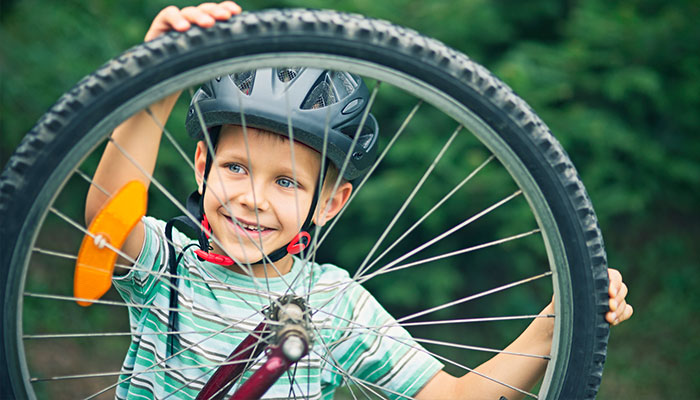While we believe that the books and resources recommended may be of value to you, keep in mind that these are suggestions only and you must do your own due diligence to determine whether the materials are appropriate and suitable for your use. PNC has no sponsorship or endorsement agreement with the authors or publishers of the materials listed.

TRANSPORTATION
Bicycles
Children will explore bicycles and gears.

Lesson Objective
Children will use bicycles, a common form of transportation, to explore how gears work
Science
What You'll Need
- A set of gears – available at hobby, education, and discount retailers
- A small bicycle – coaster brake style
- Manual pencil sharpener – one you can take apart to show the gears
- Clock – one you can take apart to show the gears
- Rotary egg beaters – 1 for every 3 children
What To Do
- Display the set of gears. Ask children to describe the gears.
- Demonstrate how to connect two gears on a table and how to move them. Show how to add more gears. Challenge the children to get all of the gears moving at once.
- Show a picture of one of the gears that is connected to the other gears on the table. Ask the children how they can get one gear to move by touching the other gears. Give children the opportunity to use the other gears to try out their explanations.
- Ask the children for some things that they think might have gears. Show the children the clock with the cover removed, the egg beater, and the pencil sharpener, and explore gears with them (see Guiding Student Inquiry).
- Display the bicycle. Ask if it has any gears, where the gear is, and what has to happen to make the gear move. Challenge the children to tell you how to do that.
- Once the children have had enough time to figure out that moving the pedals on the bicycle will make the gear move, ask them what other part of the bicycle is moving with the gear.
- Explain that moving the pedals causes the gear to move the chain on the bicycle. When you pedal the bicycle, the pedals cause the gear to move the chain, which then moves the gear on the rear wheel, making the wheel move.
- This bicycle is a form of transportation—like a car or a truck. The difference is that a bicycle does not need a motor to give it power; the rider pedaling is the power.
Resources
Home School Resources
Home educators: use these printable lesson PDFs to teach this lesson to your home schoolers. They're available in English and Spanish.
Content Provided By
Common Core State Standards Initiative – These lessons are aligned with the Common Core State Standards ("CCSS"). The CCSS provide a consistent, clear understanding of the concepts and skills children are expected to learn and guide teachers to provide their students with opportunities to gain these important skills and foundational knowledge [1]. Visit the CCSS


